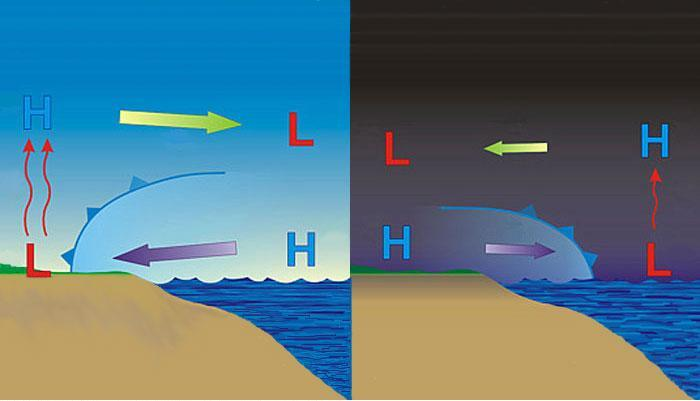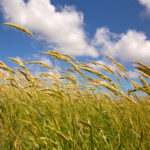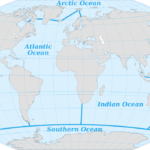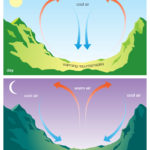During the day, land gets heated by the Sun much quicker than does water. As the land becomes warmer, it heats the air in the atmosphere above it. This causes the air to expand, becoming less dense, and thus creating a low pressure.
Because water heats up much less quickly, air above the ocean also takes longer to increase in temperature. The result is that a higher pressure is maintained.
With a high pressure above the water and a lower pressure above the land, conditions are perfect for a small breeze to develop. Wind blows from the sea towards the land along the pressure gradient in an attempt to equalize pressure. This is known as a sea breeze.
In the night, land cools down much quicker than does the waters of the ocean. As the land becomes cooler, so does the air above it. This results in air becoming more dense, forming a high pressure, causing winds to blow outward towards the sea. This is known as a land breeze.
Thus, in the day we often see sea breezes, while in the evening we see land breezes in coastal regions.






